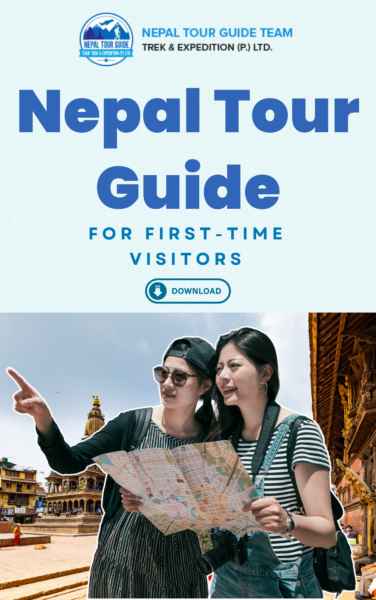Nepal, the landlocked country nestled in the mighty Himalayas, beckons travelers with its breathtaking beauty, rich culture, and once-in-a-lifetime experiences.
While the iconic Everest Base Camp trek and the bustling streets of Kathmandu hold undeniable charm, venturing beyond the usual tourist trail can unlock hidden gems and unforgettable experiences.
This blog unveils 7 Nepal tourist places that offer a glimpse into the country’s diverse landscape, culture, and off-the-beaten-path adventure:

7 Nepal Tourist Places
1. Gaurishankar Conservation Area: A Trekker’s Paradise

Nestled in the Rasuwa district, the Gaurishankar Conservation Area is a trekker’s paradise.
Here, the majestic peaks of Gaurishankar, Melungtse, and Dorje Lakpa rise above lush valleys, offering breathtaking panoramas.
Explore diverse trails, encounter unique flora and fauna, and immerse yourself in the tranquility of the Himalayas.
2. Lumbini: Where Buddha Found Enlightenment

Lumbini, the birthplace of Lord Buddha, is a spiritual haven for Buddhists worldwide.
Pilgrims and travelers alike are drawn to the serene Maya Devi Temple, believed to be the exact spot where Buddha was born.
Explore the sacred gardens, monasteries, and museums, and experience the profound peace that permeates this holy site.
3. Mustang: Journey to the “Forbidden Kingdom”

Once a restricted kingdom, Mustang, also known as Upper Mustang, offers a glimpse into a unique Tibetan culture.
Explore ancient cave dwellings, witness traditional festivals, and trek through dramatic landscapes characterized by arid valleys and towering cliffs.
This adventure is not for the faint of heart, but the rewards are unparalleled.
4. Bandipur: A Step Back in Time

Nestled on a ridge overlooking the Himalayas, Bandipur is a charming Newari town known for its traditional architecture and laid-back atmosphere.
Wander through narrow cobbled streets lined with intricately carved wooden houses, soak in breathtaking mountain views, and experience the warmth of Nepali hospitality.
5. Shey Phoksundo National Park: Home to the Rare Snow Leopard

Shey Phoksundo National Park, nestled in the Dolpa district, is a haven for nature lovers and adventure enthusiasts.
Hike to the crystal-clear turquoise waters of Phoksundo Lake, trek through diverse landscapes, and keep your eyes peeled for the elusive snow leopard, one of the park’s most prized residents.
6. Chitwan National Park: A Wildlife Safari Adventure

Embark on a thrilling wildlife safari adventure in Chitwan National Park, a UNESCO World Heritage Site.
Explore the diverse ecosystems, spot one-horned rhinos, majestic Bengal tigers, and a plethora of other wildlife, all while enjoying the lush greenery and diverse landscapes.
7. Pokhara: Adventure Hub and Lakeside Paradise

Pokhara, nestled on the shores of the serene Phewa Lake, is a popular tourist destination and a center for adventure activities.
Paraglide over the stunning scenery, trek to Poon Hill for breathtaking sunrise views, or simply relax by the lake and soak in the peaceful atmosphere.
Book Nepal Tourist Places With Nepal Tour Guide

Nepal offers an abundance of experiences beyond the well-trodden tourist paths. Embrace the opportunity to discover hidden gems, experience diverse cultures, and create unforgettable memories on your Nepalese adventure.
Book your seat for Nepal Tour with Tourguideinnepal.com and embark on an unforgettable journey!
Call us 24/7: +97714417940 WhatsApp / Viber: +977985124370 Email: [email address removed] Website: https://tourguideinnepal.com/
We are a registered Nepal tour company with Reg. No. 149604/72/073, Vat No. 604262563, and Tourism Lic. No. 2115. Trust your Nepal adventure to the experts!












































 +977-9851243700
+977-9851243700
 TourGuideInNepal.com
TourGuideInNepal.com






